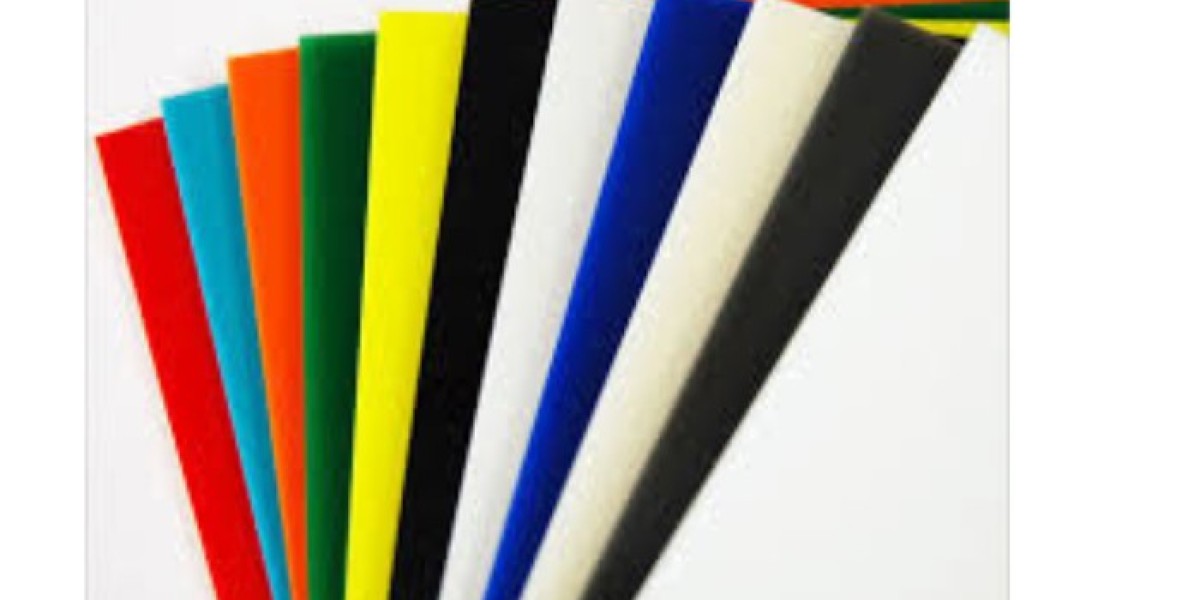Vacuum forming is a versatile and widely used manufacturing process that helps create various plastic products, from simple packaging to complex automotive parts. It’s a method that involves heating a plastic sheet until it becomes pliable, then using vacuum pressure to form it around a mold, which gives the plastic its desired shape. If you are in the business of producing plastic goods or are simply curious about the process, understanding how Vacuum Forming Machine Plastic Sheets work is crucial.
This article dives deep into the concept of vacuum forming machines and the role plastic sheets play in the process. We will also discuss how to choose the right machine and materials, key applications, and the advantages of using vacuum forming in plastic manufacturing. Additionally, we’ll address frequently asked questions (FAQs) to provide a well-rounded overview of the subject.
What Is a Vacuum Forming Machine?
A vacuum forming machine is a device used in the process of shaping plastic sheets into specific forms using heat and vacuum pressure. It’s a simple, cost-effective, and flexible method widely used across industries such as automotive, packaging, medical devices, and even for custom parts and prototypes.
The process involves several steps:
- Heating the Plastic Sheet: The plastic sheet is clamped in place and heated until it reaches a pliable state, often just before its melting point.
- Vacuum Process: Once heated, the soft plastic sheet is placed over a mold. A vacuum pump is then used to remove the air between the plastic and the mold, pulling the sheet tightly against the mold's surface.
- Cooling and Trimming: After the plastic sheet has taken the shape of the mold, it is allowed to cool and solidify. The formed plastic is then trimmed to remove excess material.
There are different types of vacuum forming machines, ranging from manual and semi-automated machines to fully automated systems. Depending on your production needs, you can choose the right type of machine that suits the scale and complexity of your project.
Plastic Sheets for Vacuum Forming: What You Need to Know
The plastic sheets used in vacuum forming are the key material that defines the final product's characteristics. These sheets are typically made from thermoplastic materials, which can be heated, shaped, and then cooled without degrading. Some common types of thermoplastics used in vacuum forming include:
1. Acrylonitrile Butadiene Styrene (ABS)
ABS is one of the most popular plastics used in vacuum forming due to its strength, durability, and ease of molding. It is commonly used in automotive parts, consumer goods, and electronics.
2. Polycarbonate (PC)
Polycarbonate is another strong, durable material known for its excellent impact resistance. It is often used in protective covers, helmets, and automotive applications where toughness is essential.
3. Polyvinyl Chloride (PVC)
PVC is a versatile material used in various industries due to its excellent chemical resistance and low cost. It’s often used in packaging, automotive parts, and construction materials.
4. High-Density Polyethylene (HDPE)
HDPE is a lightweight, strong material commonly used in food packaging, containers, and outdoor products due to its resistance to moisture and UV rays.
5. Polystyrene (PS)
Polystyrene is a relatively inexpensive plastic used in many vacuum forming applications, particularly in disposable packaging, trays, and cups. It is lightweight, easy to mold, and offers good dimensional stability.
Choosing the right plastic sheet for vacuum forming depends on the product's intended use, strength, flexibility, and environmental factors like heat or chemical exposure.
Key Applications of Vacuum Forming Machines and Plastic Sheets
Vacuum forming machines are versatile and can be used across various industries. Below are some of the key applications:
1. Packaging
Vacuum forming is widely used in the packaging industry to create custom plastic trays, blister packs, and clamshell packaging for retail products. The process offers cost-effective and durable packaging solutions that protect products while offering an attractive presentation.
2. Automotive Parts
The automotive industry uses vacuum forming to create lightweight and durable components such as dashboard panels, interior trims, and wheel well covers. The flexibility of the vacuum forming process allows for the creation of custom parts at a relatively low cost.
3. Medical Devices
In the medical field, vacuum forming is used to create medical trays, packaging, and equipment casings. The process is ideal for producing sterile, lightweight components that meet the industry’s stringent requirements.
4. Consumer Goods
Vacuum forming is often used in creating consumer products like furniture components, toys, and electronics casings. The ability to produce high-quality, customized parts quickly makes it a popular choice for manufacturers.
5. Signage and Displays
Vacuum-formed plastic sheets are used to create eye-catching signs, point-of-purchase displays, and advertising materials. These products are durable, lightweight, and easily shaped into custom designs.
Benefits of Using Vacuum Forming Machines
Vacuum forming offers several advantages over other plastic forming methods, making it a popular choice for many industries. Here are some of the key benefits:
1. Cost-Effectiveness
Vacuum forming is one of the most cost-effective methods for producing plastic components, especially for low to medium production volumes. The molds used in vacuum forming are relatively inexpensive compared to injection molding, making it an affordable option for prototypes and custom parts.
2. Speed and Efficiency
Vacuum forming is a relatively fast process that allows for quick production turnaround. Once the mold is created, it can be reused to form multiple parts, making the process efficient for batch production.
3. Design Flexibility
Vacuum forming machines allow for a high degree of design flexibility. Manufacturers can create complex shapes, intricate designs, and custom components with ease, enabling innovation and creativity in product design.
4. Material Variety
The variety of thermoplastic materials available for vacuum forming provides manufacturers with options to suit specific project requirements. From rigid, impact-resistant plastics to lightweight, flexible sheets, vacuum forming can accommodate different material needs.
5. Low Waste
The Vacuum Form Sheets process generates minimal waste since excess plastic can often be reused or recycled. This makes it an environmentally friendly option, especially for companies looking to reduce their carbon footprint.
How to Choose the Right Vacuum Forming Machine
Selecting the right vacuum forming machine is crucial to ensuring efficient production and high-quality results. Here are some factors to consider when choosing a machine:
1. Size and Scale of Production
Consider the size of the plastic sheets you will be using and the scale of your production. If you're working on small-scale projects or prototypes, a manual or semi-automated machine may suffice. For larger-scale productions, an automated machine with higher output capacity is ideal.
2. Complexity of Parts
If your products require intricate designs or have complex geometries, choose a machine with advanced control features, such as multi-zone heating and precise vacuum control. These features allow for more accurate molding of complex shapes.
3. Material Compatibility
Different vacuum forming machines are designed to work with specific types of thermoplastics. Ensure that the machine you choose is compatible with the plastic sheets you intend to use, whether it's ABS, PVC, HDPE, or other materials.
4. Ease of Operation
Choose a machine that is easy to operate and maintain, especially if you are new to vacuum forming. Look for machines with user-friendly controls, minimal setup time, and easy-to-clean components.
5. Cost and Budget
Consider your budget when selecting a vacuum forming machine. While automated machines offer higher production speeds and advanced features, they also come with a higher price tag. Balance your production needs with the available budget to make the best choice for your operation.
Conclusion
Vacuum forming machines and plastic sheets are essential components in modern manufacturing, offering versatility, cost-efficiency, and design flexibility. Whether you are in the automotive, packaging, medical, or consumer goods industry, understanding the process and selecting the right materials and machine is critical for success. By choosing the right Thermoplastic Sheets For Vacuum Forming, you can create high-quality, durable products while optimizing production efficiency.
Frequently Asked Questions (FAQs)
1. What types of plastic sheets can be used in vacuum forming?
Common plastics used in vacuum forming include ABS, PVC, HDPE, Polycarbonate, and Polystyrene. Each material has unique properties, so selecting the right one depends on the intended use, durability, and environmental factors of the final product.
2. What is the difference between vacuum forming and thermoforming?
Thermoforming is a broader term that encompasses all processes involving the heating of plastic sheets and shaping them into a form. Vacuum forming is a subset of thermoforming that specifically uses vacuum pressure to shape the heated plastic around a mold.
3. How thick should plastic sheets be for vacuum forming?
Plastic sheets for vacuum forming typically range from 0.5mm to 6mm in thickness. The required thickness depends on the size and complexity of the part being formed, as well as the desired strength and rigidity of the final product.
4. Can vacuum forming be used for large production runs?
Yes, vacuum forming can be used for both small and large production runs. However, for extremely high-volume production, injection molding might be more cost-effective due to the lower per-unit cost over large quantities. Vacuum forming is generally more suited to low to medium production volumes or custom parts.



